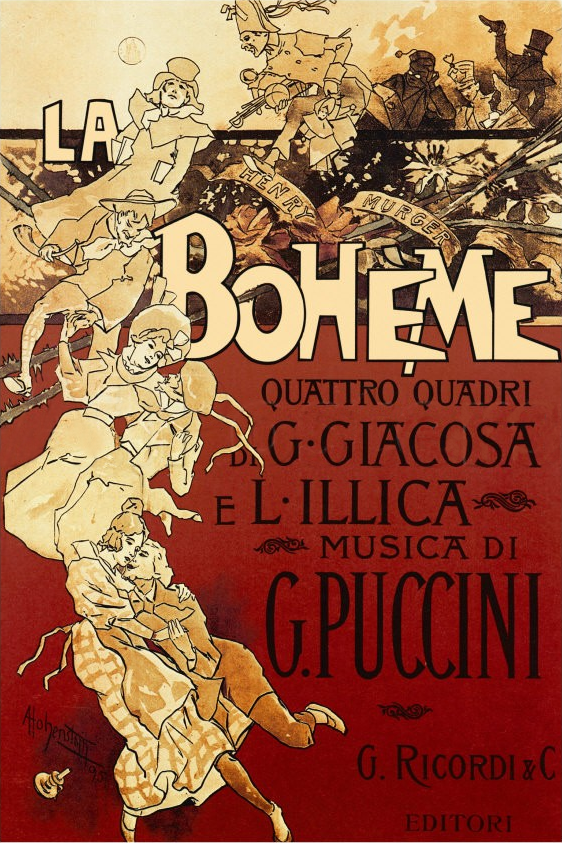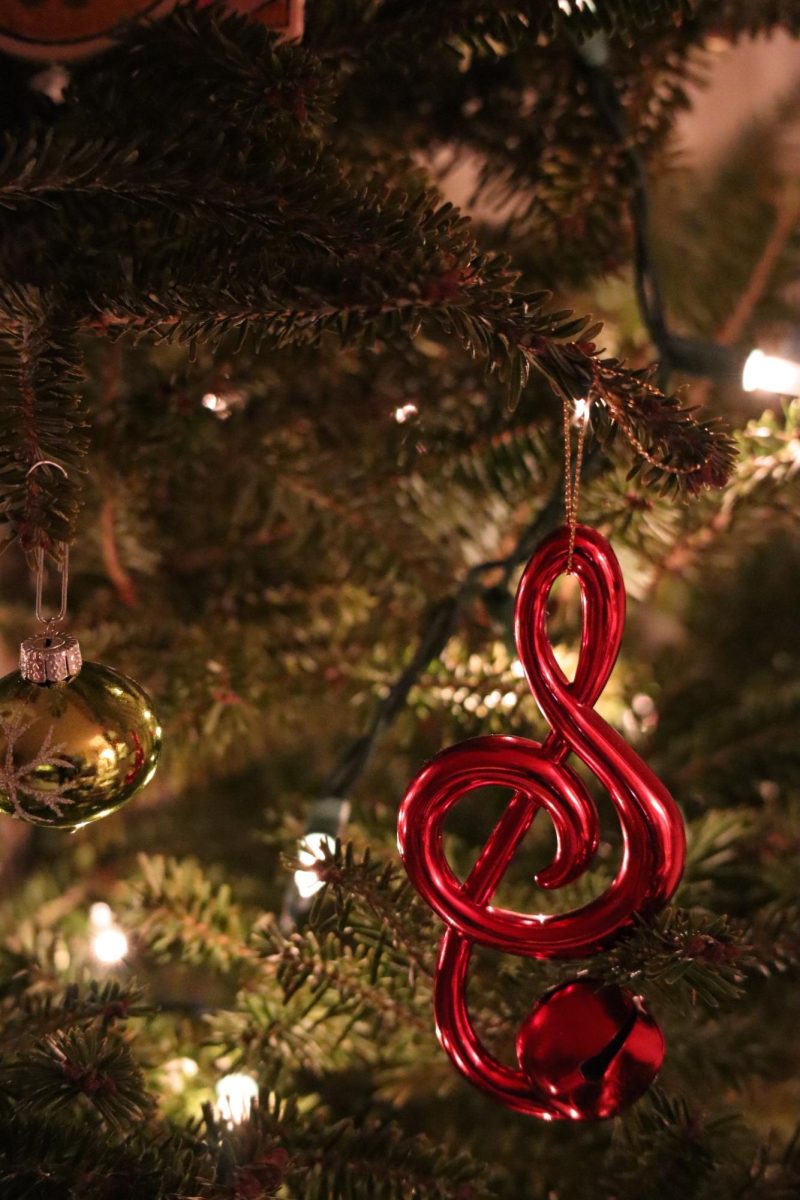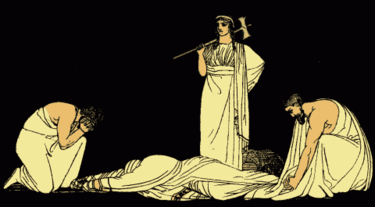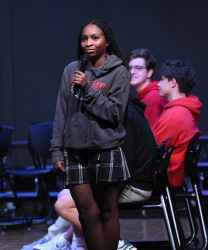This past November, I had the opportunity and privilege to go see the Atlanta Opera’s new, revamped, and modernized production of Puccini’s iconic opera, La Bohème, at the historic Pullman Yards. The production was part of a greater project, the ambitious “Boheme Project,” which combines two productions of La Bohème with Jonathan Larson’s award-winning musical,
Rent, based on Puccini’s opera. Now, what of the original?
Based on Henri Murger’s novel “Scènes de la vie de bohème” (Scenes of Bohemian Life) and written between 1893 and 1895, eventually premiering in 1896 at the Teatro Regio in Turin, Italy, La Bohème stands today as one of the modern masterpieces in opera and music in general. Puccini’s story, inspired by the book rather than a direct adaptation, is set in 1830s Paris
and revolves around a group of friends, Bohemians (non-conforming artists, similar to hippies), telling of a year of their lives. The original group, all roommates, includes Rodolfo, a poet, Marcello, a painter, Schaunard, a musician, and Colline, a philosopher. Later on in the show they are joined by Mimi, a seamstress and the love interest of Rodolfo, and Musetta, a singer and on-and-off-again lover of Marcello. The story’s main focus,however, is the relationship between Rodolfo and Mimi, his neighbor who suffers from Tuberculosis, an illness that dramatically changes the course of the story. This aspect, illness, is at the heart of the Boheme Project
and is one of the aspects that makes this classic story relevant.
The Boheme Project is made up of two productions of La bohème and one of Rent. The first
production of La Bohème is your classic and traditional production set in 1830s Paris. Here, the illness in question is tuberculosis, what Puccini originally depicted. The production of Jonathan Larson’s Rent is also your standard production, set in late 1980s/early 1890s New York, the illness in question is HIV/AIDS. The second production of La Bohème however, breaks out of tradition in a unique and modern way. This production, which uses the same sets used in Rent
(as they run simultaneously), is set in 2020 when the illness in question is COVID-19. La Bohème has found its way into the hearts of viewers worldwide, with performances never running short. There have been many modern restagings (such as Atlanta’s Boheme
Project) and retellings, such as Jonathan Larson’s Rent. The story has been relevant for over a hundred years, with modern audiences modifying aspects of it to fit with their current challenges. This is what the Boheme Project did, to a praiseworthy success. If Opera companies want to welcome new generations of opera lovers to their productions, they must engage with them to make them understand why it was that these narratives were found relatable, to begin with. This is why, I believe, La Bohème is the best show to demonstrate this.
Since its original premiere in 1896, La Bohème has been produced by hundreds of opera
companies worldwide. La Bohème has resonated with audiences for many different reasons, proven to us by The Boheme Project. Something that I deeply love about La Bohème, is the friendship and love felt between the characters. La Bohème is made up of 4 different acts, of which I can say Act II is my absolute favorite. The characters find themselves roaming Paris’
Latin Quarter on Christmas Eve, dining at the now immortal Café Momus. What I love so much about this act is that before the tragic ending of the opera, where Mimi succumbs to her illness and dies, we get this part of the story, where the characters are joyous and festive, where Rodolfo and Mimi speak of their futures which will never come to pass, where Marcello and Musetta get together for the first time during the story, after the iconic aria, “Quando men vo.” The friendship of these characters is strong and the comradery and festive cheerfulness of the Latin Quarter is contagious. Another unforgettable and influential aspect is that of the music. Puccini’s unforgettable score is masterful at conveying emotions through lyrics and orchestrations. When required, Puccini delivers the feelings of joy and excitement of the vibrant Latin Quarter, as well as the somber, intimate emotions of love and despair present in the last couple of scenes.
In Act I, Rodolfo and Mimi’s love is explored through introductions of themselves with Rodolfo’s Che gelida manina (What a frozen little hand), and Mimi’s Si Mi chiamano Mimi (Yes, They call me Mimi), with their love culminating in my favorite piece of Act I, the ending: O Soave Fanciulla (Oh Sweet Girl).
In Act II, the music conveys the excitement felt by the Latin Quarter during Christmas Eve, most apparent on the opening of Act II: Arranci, datteri! (Oranges, dates!), where citizens sell their products for the Christmas celebrations, and the end of Act II: chi l’ha richiesto? Caro! Fuori il danaro! (who asked for it? Dear! Get the money out!), where the main cast of characters
get involved in a military parade. After this high note, the remaining acts are composed mainly of somber music, reflecting the darker tone of the remainder of the show. In Act III we get a conversation between Mimi and Marcello: Mimi! – Speravo di trovarvi qui (Mimi! – I was hoping to find you here), where Mimi tells of Rodolfo’s jealousy and abandonment, conveying the frustration and sadness she feels, with the orchestrations echoing the same emotions. The two later agree to remain together during winter but to go their separate ways during spring, dunque epropio finita (so it’s really over), Thus we begin Act IV, where hope is truly faint. After finding Mimi in the street, sick and unable to move, Musetta brings her over to Rodolfo, as the friends each go, giving all that they have to buy medicine and to bring a doctor over. It is here, that we have the most emotionally charged scene of La Bohème, still bringing me to sadness to this day, Sono andati? (are they gone?). Here Mimi and Rodolfo recount the story of their love and confess to each other how they only ever truly loved each other. This piece remains truly unforgettable due to how it brings together leitmotifs heard through the opera into one final duet between the two. The orchestrations at the beginning of the scene are unique, bringing to the
spotlight soft and tender flutes and strings, paving the way for some of the most emotional music the West has to offer.
Puccini was not writing about kings, lords, or heroes, but about ordinary people, a group of friends who love and care for each other, something everyone can relate to. Tuberculosis is not the problem now as it was in Puccini’s time, but in our modern time, we are still torn apart by illnesses we hold no control over. We all love and lose loved ones, today as back then. This
is why for years to come, this story will be as relevant tomorrow as it is today, as it was yesterday.
Thanks for reading.














